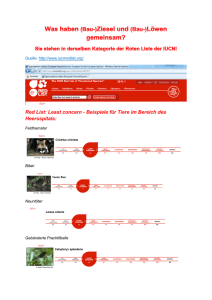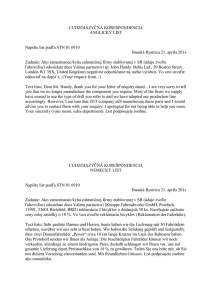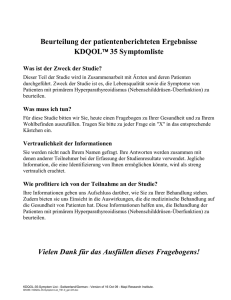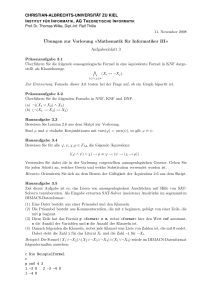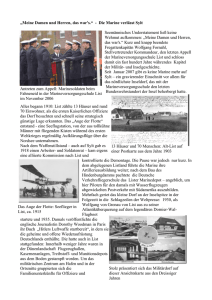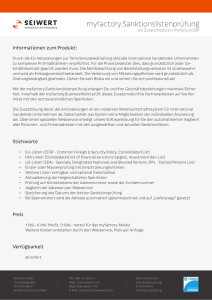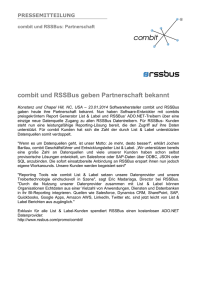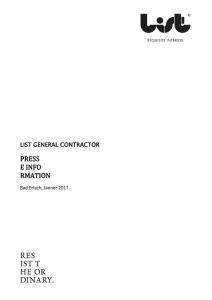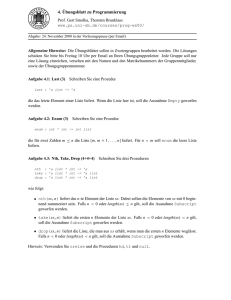Handout - Joachim Breitner.
Werbung
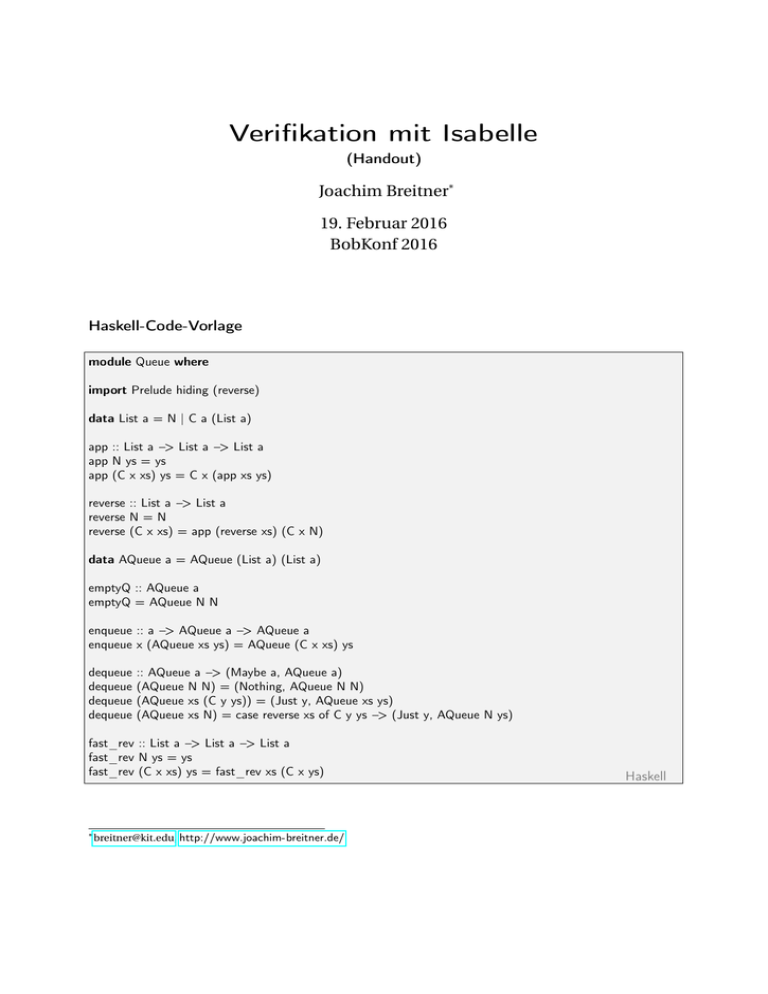
Verifikation mit Isabelle (Handout) Joachim Breitner* 19. Februar 2016 BobKonf 2016 Haskell-Code-Vorlage module Queue where import Prelude hiding (reverse) data List a = N | C a (List a) app :: List a −> List a −> List a app N ys = ys app (C x xs) ys = C x (app xs ys) reverse :: List a −> List a reverse N = N reverse (C x xs) = app (reverse xs) (C x N) data AQueue a = AQueue (List a) (List a) emptyQ :: AQueue a emptyQ = AQueue N N enqueue :: a −> AQueue a −> AQueue a enqueue x (AQueue xs ys) = AQueue (C x xs) ys dequeue dequeue dequeue dequeue :: AQueue a −> (Maybe a, AQueue a) (AQueue N N) = (Nothing, AQueue N N) (AQueue xs (C y ys)) = (Just y, AQueue xs ys) (AQueue xs N) = case reverse xs of C y ys −> (Just y, AQueue N ys) fast_rev :: List a −> List a −> List a fast_rev N ys = ys fast_rev (C x xs) ys = fast_rev xs (C x ys) * [email protected], http://www.joachim-breitner.de/ Haskell Isabelle-Syntax-Cheat-Sheet Theorie-Kopf Code-Export theory Theoriename imports Main Weitere Theorien begin ... end export_code funktion1 funktion2 . . . in Sprache file "Pfad " Sprache: Haskell, SML, OCaml oder Scala. Pfad: ein Verzeichnis bei Haskell, ein Dateiname sonst. Typen Lemmata Typvariablen beginnen mit ’ (Apostroph), Typkonstruktoren werden post-fix geschrieben. lemma Lemmaname[simp]: "Aussage" Beweis Auswahl an Typen: Das [simp] ist optional, und sorgt dafür dass der Simplifier (z.B. auto, siehe unten) dieses Lemma, wenn es eine Gleichung ist, stets von links nach rechts anwendet. Achtung: Kann zu Endlosschleifen führen. • (’a × ’b) für Paare (x,y) (Eingabe: \ti) Selektoren fst und snd • ’a ⇒ ’b für Funktionen (Eingabe: =>). • ’a option, Konstruktoren: Some x und None Terme Mit [code_unfold] wird die Gleichung bei der Codegenerierung angewandt. Funktionsanwendung wie in Haskell: foo arg1 arg2 arg3. Beweise Geklammert werden müssen: Grundform ohne Induktion: • (if ... then ... else) • (case ... of N ⇒ ... | C x xs ⇒ ...) apply auto done Algebraische Datentypen Grundform mit Induktion: datatype ’a ’b ’c typname = con1 "typ1a" "typ1b" . . . | con2 "typ2a" "typ2b" . . . ... apply (induction xs) apply auto done Optionen für auto: Funktionen • split: typ.split Wenn das Ziel eine Fallunterscheidung (case ... of) über Werte vom Typ typ enthält, zerlege das Ziel entsprechend. fun name :: "typ1 ⇒ typ3 ⇒ typ" where "name pat1a pat1b = rhs1 " |"name pat2a pat2b = rhs2 " Patterns können wie üblich Variablen (xs) oder Konstrukturen (C x xs) sein. Optionen für induction: • arbitrary: ys Die Variable ys ist im induktiven Schritt beliebig. • rule: foo.induct Verwende eine Induktionsvariante, die der Definition der Funktion foo entspricht. Definitionen ohne Parameter gehen nicht mit fun, sondern mit definition name :: "typ" where [simp]:"name = rhs" Einen unfertigen Beweis erstmal ignorieren: sorry 2
